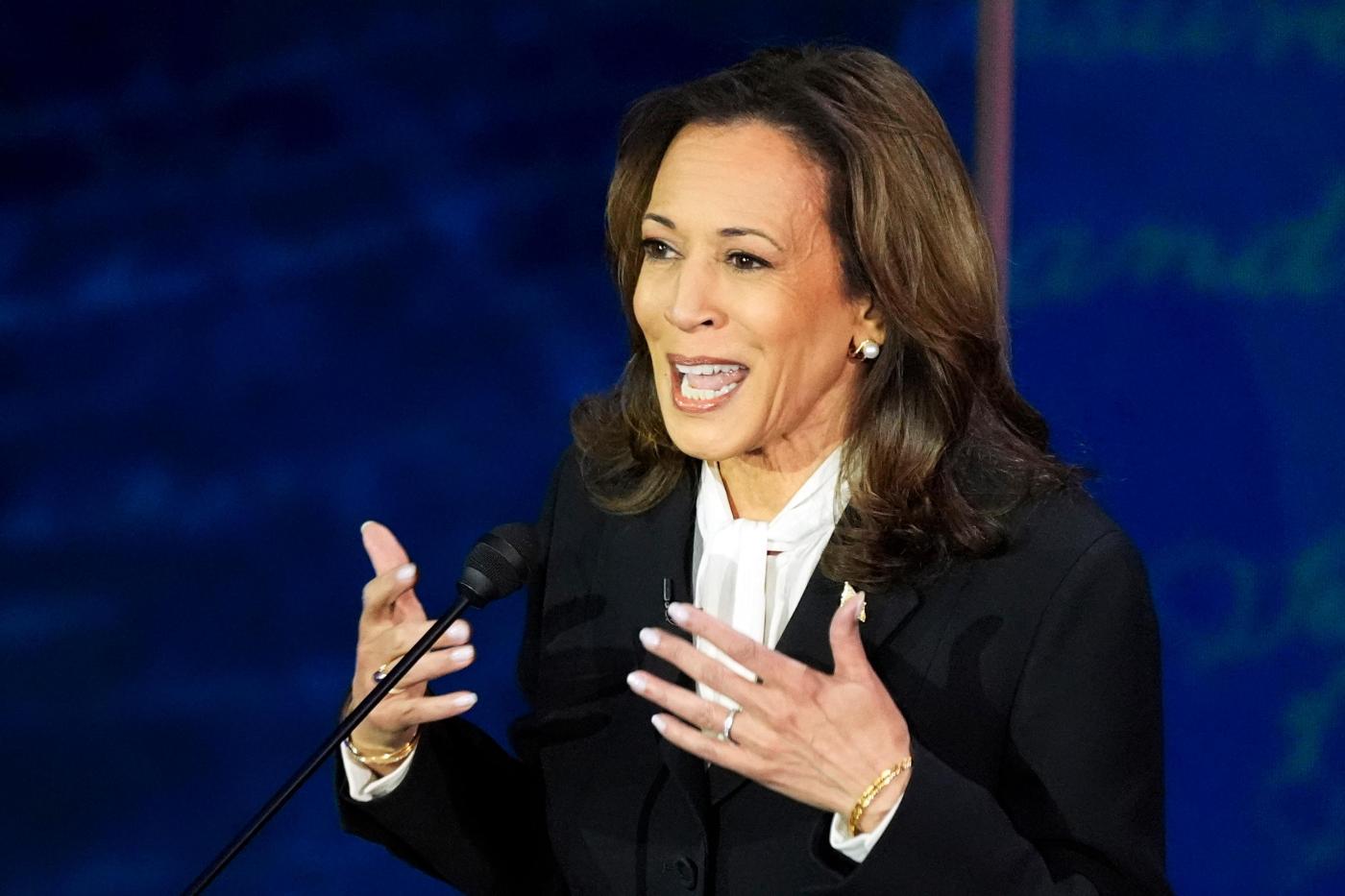
David Brooks: How a cultural shift favors Harris
American culture changes with astonishing speed. Nearly every decade, there are shifts in values, fashions and norms — in the whole atmosphere of national life. Sometimes when you’re watching a presidential campaign, it is best to ask: What year is it? What values and moods are dominant in America right now? Which candidate just seems right for this moment, and which candidate is simply out of step with the zeitgeist?
Right now, I’d say, Kamala Harris is benefiting from the beginning of a cultural shift and is beginning to have the cultural winds at her back. Donald Trump is beginning to be slapped in the face by those winds.
Trump emerged in the 1970s and 1980s. It was the tail end of the culture of narcissism, or what Tom Wolfe called the Me Decade. It was the era of the unchained self — self-esteem, self-expression, self-promotion. In the ’80s, especially in Manhattan, there was an unabashed fascination with wealth, self-display, ego, the lifestyles of the rich and famous.
Trump was the cartoon epitome of all that decade’s extravagances. The Trump Tower on Fifth Avenue opened to the public on Feb. 14, 1983, with all its gild and glitz. His book “The Art of the Deal” came out in 1987, with its braying and panting over money, money, money. In that cultural moment, gold-plated narcissism made Trump a celebrity.
Then came the 1990s, the end-of-history decade — the end of the Cold War, the end of apartheid. In this decade of big events and low conflict, Trump was out of step. He was there, but in the background.
Then came the 2000s and the war on terror. Trump’s show “The Apprentice” went on the air in 2004. It was popular but didn’t drive the conversation. There was a real war going on, and the men and women serving in Iraq and Afghanistan represented a kind of heroism that put the casino owner’s tinsel machismo in the shade.
But then came the 2010s, the age of indignation. On May 15, 2011, street protests broke out in Spain led by people who called themselves “los indignados” — the outraged. Their rallying cry was “They don’t represent us!” The protesters were disgusted with their nation’s ruling class. Before long, a moral convulsion swept across the Western world and Latin America. Groups on the right (the rural white working class) and the left (Black Lives Matter) that had been marginalized by the establishment demanded new power and representation. Disgust with established power was high. Social trust dropped.
Trump was perfect for this moment. Disdained and scorned by the Manhattan elite, he had built up a lifetime of anti-establishment resentments that dovetailed with the working class’s pervasive contempt. He began a hostile takeover of the Republican Party and then the federal government. The key word in that sentence is “hostile.” Hostility was in vogue, on the left and the right.
Then, in 2018, the group More in Common released a survey of the American electorate in which it popularized the phrase “the exhausted majority.” Many people were tired of the bitterness, the endless Trumpian and culture war psychodrama. There was an intense desire to leave all that behind. In a relatively tight election, Joe Biden rode to victory promising decency and normalcy.
What followed was a struggle between what you might call the forces of indignation and the forces of exhaustion. Trump still dominates the GOP because his people still want a guy who can take a sledgehammer to the ruling class and its power centers. A couple of weeks ago, I wrote a column trying to describe the fundamental strengths of American populism — the pervasive hostility toward the educated class, the distrust of institutions. But there are also an increasing number of people tired of living in an endless atmosphere of tribalism, enmity and conflict — even in the Republican camp.
Harris enjoyed a surge in the polls as she became the nominee, in part because she projected a new emotional tone — the politics of joy, as Democrats kept saying during their convention. During Tuesday’s debate, she converted that emotional shift into a campaigning and governing style.
During the debate, I thought Harris did a poor job of laying out her vision for the next four years. But she did a brilliant job rebutting the cultural values embodied by Trump.
For example, no debate opponent before Harris has known how to handle Trump’s narcissism. Harris seemed to understand that narcissism is fundamentally fragile. She poked it. She pricked it. She induced Trump to lash out feebly — with his talk about crowd sizes and how much world leaders such as Russian President Vladimir Putin allegedly respect him.
She scorned the moral inversion that Trump represents. Most Americans revere military valor, represented by people such as John McCain, whom Trump has denigrated. Harris called Trump a disgrace to his face while he stood there smiling weakly.
She repeated her mantra of change: It’s time to turn the page and move forward. This cry is not persuasive on policy grounds. Her agenda is a shrunken version of the unfinished Biden agenda. Biden has been pioneering a new form of industrial policy that represents a fundament shift in the role of government in the American economy. Harris doesn’t talk about the scope of what her administration is doing.
But Harris was very compelling when portraying herself as an agent of cultural change. Her smiling equipoise is a statement of self-confident power against his sour fuming. Her “I care about you” is a stark foil to his narcissistic “I care about me.” Her good cheer and compassion contrasts with the atmosphere of bitterness and indignation that has enveloped us for a decade.
Some people dismiss all this as vibes. I don’t. This is culture. What sort of people do we want to be? What sort of values and manners do we want to see reflected in our national leaders? Who do we want shaping the nation’s social atmosphere? As Daniel Patrick Moynihan famously noted, culture matters most, but government can change culture.
There is a rhythm to cultural change, with periods of public turmoil giving way to periods when people want to turn inward. World War I gave way to the carefree hedonism of the flappers during the 1920s. World War II gave way to the domesticity of the 1950s. The days of rage in the late 1960s gave way to the new age mellowness of the mid-1970s. People can be up in arms for only so long. The wearier we grow with American carnage catastrophizing, Trump seems not just monstrous but, worse, stale.
We’re still an exhausted and battered nation, but if history is a guide, then just over the horizon there is some new cultural moment coming. I suspect that Harris’ happy strength gives us a glimpse of the zeitgeist of tomorrow. This spirit alone won’t propel her to victory, but it will help.
David Brooks writes a column for the New York Times.
Related Articles
Skeet, Pelissero: How to avoid AI-enhanced attempts to manipulate the election
Farah Stockman: There’s a right way and a wrong way to wield sanctions
Marc Champion: Putin’s ‘troll farm’ isn’t necessary. We have our own
Other voices: Ukraine needs more weapons and the permission to use them
Matthew Yglesias: Not even Musk could discipline Trump’s spending


